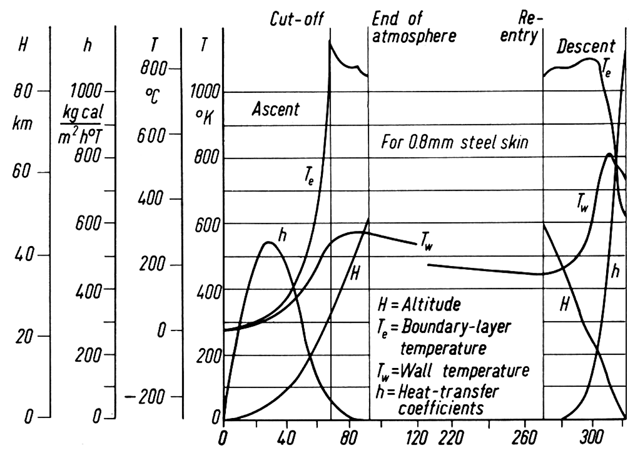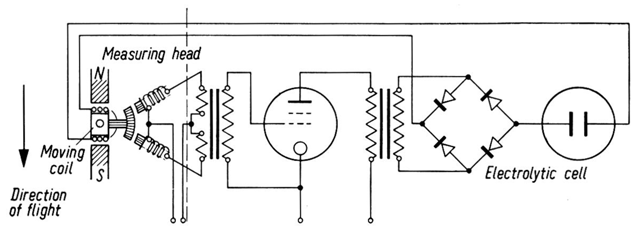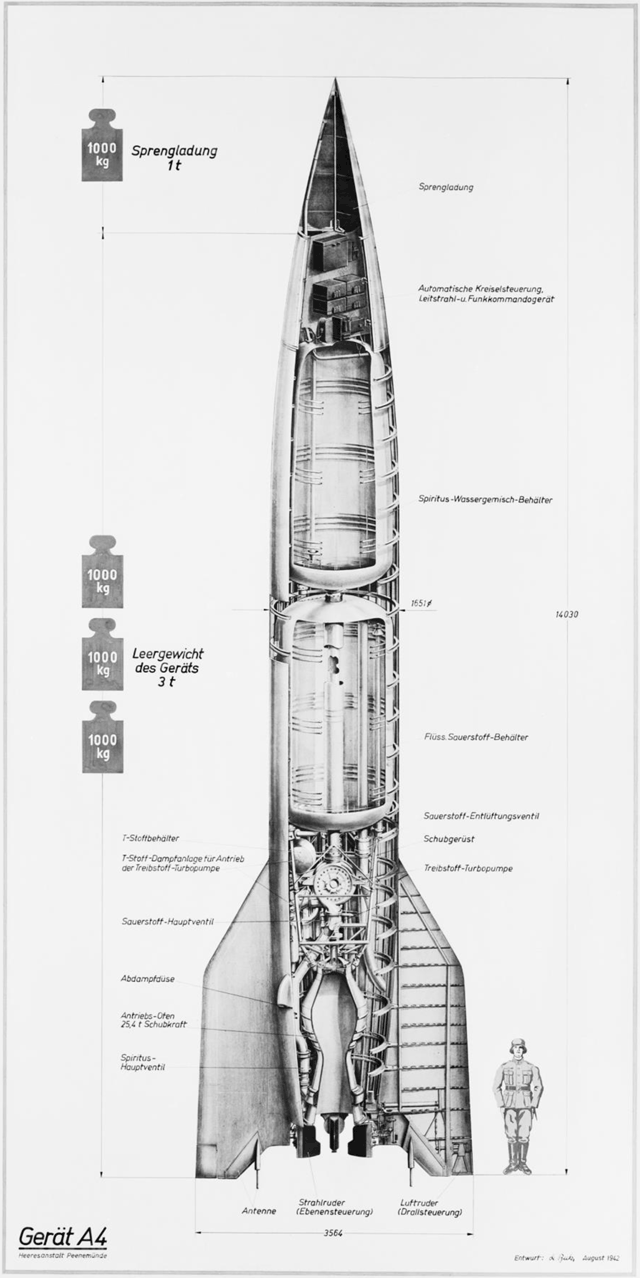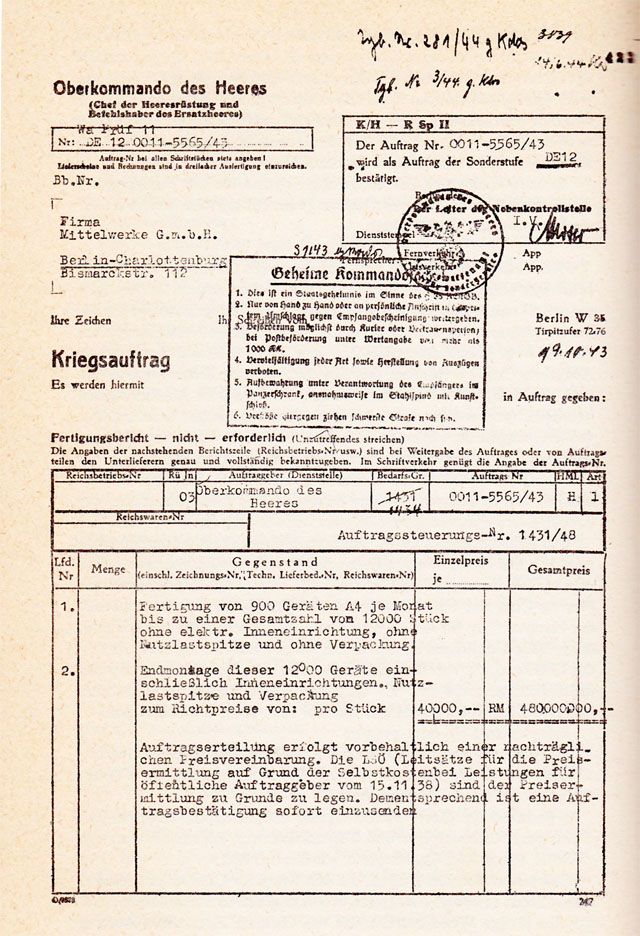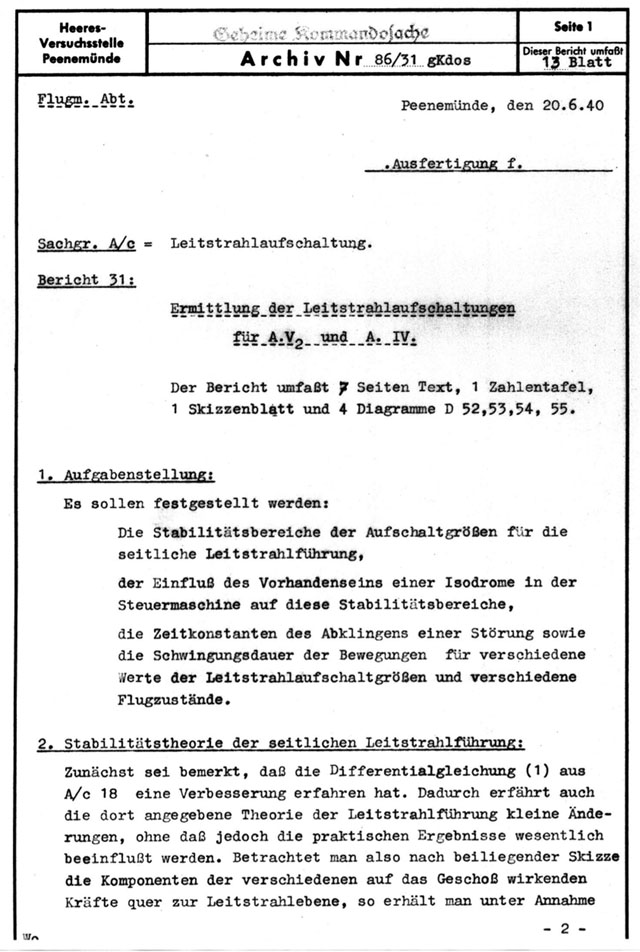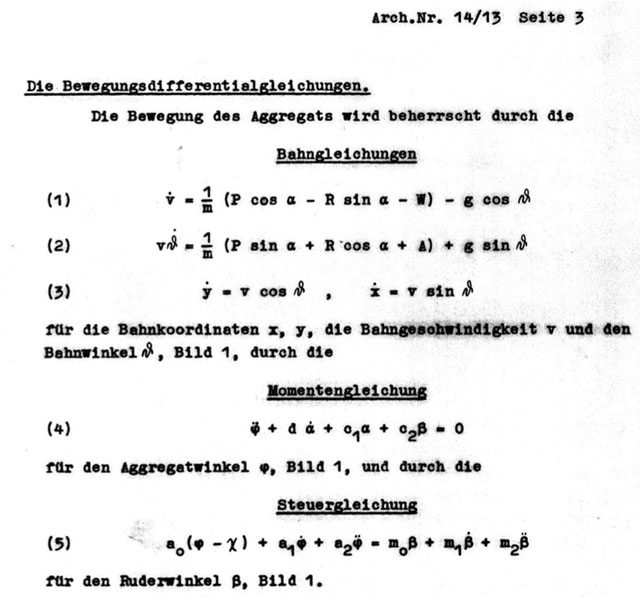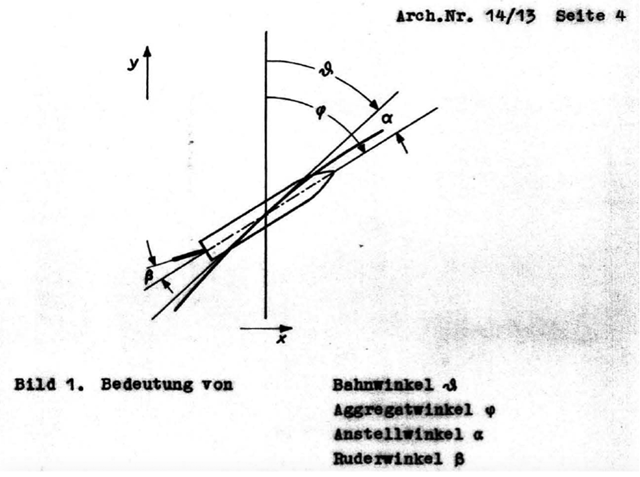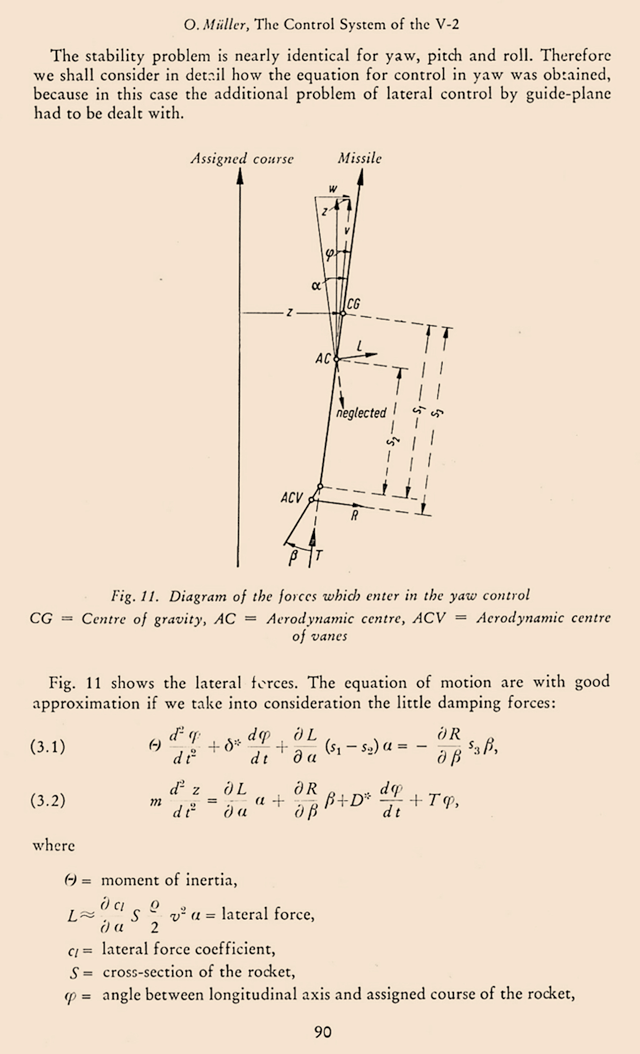The Second Equation in Gravity’s Rainbow
‘What resources do we have to understand the world around us?’ In answer to this question, N. Katherine Hayles identifies three categories: mathematical equations, simulations modelling, and discursive explanations. She immediately dismisses the first category for her project, admitting: ‘I have little to say, other than to note […] the limited usefulness of mathematics in describing complex behaviors’ (Hayles, 2005: 5). Readers of Thomas Pynchon’s Gravity’s Rainbow (1973) cannot afford to discard the explanatory potential of mathematical equations as quickly: to understand the world of Gravity’s Rainbow, readers have to take into account equations as well as discursive explanations and a number of imagined, hallucinated, or dreamed-up models of realities. The novel includes three equations in forbidding mathematical notation, and given that the physicist Stephen Hawking was warned that each equation in his A Brief History of Time would halve the sales of the book, we can speculate that Gravity’s Rainbow received only 12.5% of the readers it could have attracted – requiring readers undaunted by mathematics as well as by, as the trustees of the Pulitzer Prize put it when declining Pynchon the prize, the novel’s obscenity and unreadability. Pynchon’s novels acknowledge the stereotypical inaccessibility of mathematics that is exacerbated by off-putting notation, while also exploring less often noted ideas that challenge mathematics as a straightforwardly rational domain, or, indeed, a serious occupation (see Engelhardt, 2018). Even if the three equations in Gravity’s Rainbow might repel some readers, they have attracted attention from researchers, and two of the equations were quickly translated into more easily approachable discursive explanations.1 The last equation in the novel, introduced as a ‘hilarious graffiti of visiting mathematicians’, turns out to be a mathematical joke:
(GR 534)
A log cabin and c (homophone of ‘sea’) equal a house on the water or a houseboat. As Lance Schachterle and P. K. Aravind explain, ‘[t]he pun seems to have no grander purpose than to provide some passing amusement – amusement enhanced precisely to the degree to which the reader appreciates the underlying mathematics’ (Schachterle/Aravind, 2001: 159). It also serves the purpose to undermine the seriousness of mathematics: although the notation can be intimidating to nonspecialists, working through the graffiti should dissolve any unnecessary awe in laughter. The first equation in Gravity’s Rainbow is almost as easily stripped of its power to halve the readership: it is the so-called Poisson equation, a well-known probability distribution. In the novel, Roger Mexico charts the location of rocket hits in London, and the Poisson distribution allows him to calculate the likelihood that a certain number of quadrants receives a certain number of hits. Some characters believe that he is able to predict where the rockets hit, yet, he does not have a special kind of foresight but only knows that the distribution of any large number of cases follows the statistical law described by the Poisson equation.
Pynchon’s Second Equation is the most intricate and puzzling of the three passages in mathematical notation in Gravity’s Rainbow:
(GR 284)
It is introduced as ‘describ[ing] motion [of the Rocket] under the aspect of yaw control’ (GR 284), with yaw being a sideways rotational movement with which a rocket can veer from its prescribed path. Apart from this, readers learn little about the Second Equation. Given that it appears between a mathematical joke and the Poisson distribution, we might first ask if Pynchon’s Second Equation is real. Or is it made up, like the ‘hilarious graffiti’? A second question concerns its function in the novel: if the joke warns readers not to take intimidating mathematical notation too seriously and the Poisson distribution points to a pattern in a large number of unpredictable individual events, what role does the Second Equation have for interpretations of Gravity’s Rainbow?2
In his wide-ranging guide to Gravity’s Rainbow, Steven Weisenburger proposes that the source of Pynchon’s Second Equation is Ballistics of the Future (1946), a technical book by Johannes M. J. Kooy and Johannes W. H. Uytenbogaart. He thus suggests the equation to be real, not made up by Pynchon; yet, when Schachterle and Aravind revisited the source, they did not find the equation or one resembling Pynchon’s. Based on this finding and drawing on Aravind’s expertise as a physicist and on a book on rocketry from 1993, they conclude that Pynchon invented the equation:
Is Pynchon’s equation of motion a standard differential equation used by specialists to calculate the path of a rocket’s flight or to control its yaw? No: Pynchon’s equation does not resemble anything one might reasonably expect. […] Not only are most of the symbols in Pynchon’s equation obscure, but the general structure of the terms in the equation also makes it impossible to identify with one or other of the equations describing the position and orientation of a rocket in flight. This equation, then, is not a genuine mathematical expression in this context. It may appear authoritative to the layperson, but it is unlikely to fool a rocket scientist. (Schachterle/Aravind, 2001: 162)
Schachterle and Aravind draw out the literary implications of inventing a formula: the forbidding notation plays with mathematics as a form of authority; those in the know can use it to impress and control the uninformed majority. The Second Equation would accordingly have different effects on mathematical laypersons than on experts able to question its authority: ‘curiously, on closer inspection […], the equation does not stand up to physical/mathematical analysis. Will the reader in the know about the equation recognize its inner hollowness, its inability as presented to do what it purports to control motion?’ (Schachterle/Aravind, 2001: 166). According to this interpretation, the equation would divide the readership, separating a few scientifically informed readers from a deceived Preterite majority.
The consequences of Schacherle and Aravind’s interpretation are significant: according to their view, the Second Equation makes mathematics a tool of the Elect rather than a common resource to understand the world. Yet, where they describe the symbols in the equation as ‘obscure’, another interdisciplinary team tried to explain some of the symbols. Thomas Moore enlisted ‘a fellow amateur, reputed to have majored in mathematics’ for his book The Style of Connectedness and draws on this expertise to explain components of the Second Equation:
Θ is the desired yaw angle, present as a ‘control.’ ϕ is the missile’s range; the differential is the change in the actual yaw angle with reference to an absolute axis fixed by gyroscopes. The third additive term refers to the continuous change in the weight of the rocket as its fuel is consumed. On the other side of the equal sign, R is the distance from the rocket to the Earth’s centre; β the angle between the local horizontal and the direction of flight, δ a velocity ratio (Moore, 1987: 173).
The mathematician at work seems not to have doubted the reality of the equation and saw sense in the terms. The disagreement between the interdisciplinary research teams on this point leaves open the question of whether Pynchon’s Second Equation should be considered invented or real. Given the relevance of this answer for interpretations of authority, control, and the power of the elect few over the uninformed majority, we – a literary scholar and a mathematically-inclined biologist – took another look at the Second Equation and at sources that might prove its either real or made-up nature.
Searching for Sources
Since our examination of literary sources in Pynchon studies did not reveal a definitive proof of the either real or imagined nature of Pynchon’s mathematical description of rocket control, we turned to scientific material. When revisiting the previously considered texts, we realised that neither the book by Kooy and Uytenbogaart from 1946, nor the modern textbook on rocketry that Schachterle and Aravind consulted, explicitly refer to the steering theory – the control – of the V-2. It is therefore not too surprising that these texts did not yield an equation similar to the form of the Second Equation. But, assuming that Pynchon did not make up the formula, what material could he have used? In other words, what sources were available to him in the 1960s when writing Gravity’s Rainbow? Pynchon himself gives us some hints in the novel:
You come in – just hit town, here in the heart of downtown Peenemünde, hey, whatcha do for fun around here? hauling your provincial valise with a few shirts, a copy of the Handbuch, perhaps Cranz’s Lehrbuch der Ballistik. You have memorized Ackeret, Busemann, von Kármán and Moore, some Volta Congress papers. (GR 537-38)
The 1935 Volta Conference in Rome addressed the topic ‘High Velocities in Aviation’, and the scientists mentioned in the quotation above contributed papers on supersonic flight that might have been relevant to the later development of the V-2 (Weisenburger, 2006: 255) but do not directly concern the flight path or flight control of rockets. Cranz’s Lehrbuch der Ballistik (Cranz 1925, 1926, 1927, 1936) is a four-volume standard reference work on ballistics, published in Germany in the 1920s and 1930s. The volumes compile contemporary knowledge on bomb trajectories, air impact, measurement techniques, explosion effects, mathematical and statistical methods, and various other information. They do not, however, contain Pynchon’s Second Equation.
Gravity’s Rainbow also refers to original German documents on the V-2 rocket:
It’s a blueprint of a German parts list, reproduced so crummy he can hardly read the words – ‘Vorrichtung für die Isolierung, 0011-5565/43,’ now what’s this? […] Flagnote on the flagnote sez ‘Geheime Kommandosache!’ (GR 287-88)
The text gives details here, for example the blue colour of the paper, the code number of an original document concerning the V-2, and the stamp ‘Geheime Kommandosache’ – secret command (see appendix, Figure 4). Given these specifics, it seems likely that Pynchon actually saw these documents. This would have been possible relatively easily, since most documents on the V-2 (also called Aggregate 4, A-4) and other missiles are stored in the USA. The American Army captured the original German documents after the war, together with actual V-2s, tons of equipment and, of course, the physicists and engineers who had developed German rocketry. Wernher von Braun, who supplies Gravity’s Rainbow’s epigraph, was the probably most famous engineer transferred to the USA in ‘Operation Overcast’ – later ‘Operation Paperclip’ (see Neufeld, 1995: 270). The documents were first stored in Fort Eustis in Virginia and collected in an ‘Accession List of German Documents pertaining to Guided Missiles’ (1946), with an English summary added to each report. Copies of the papers, mostly in microfilm, were stored in the Smithsonian Institution in Washington and probably also in other archives since the German technology became the basis for the development of American rocketry (see, for example, Neufeld, 2008).3 The original or copied documents were returned to Germany in the 1950s and deposited at the German Museum in Munich (Deutsches Museum, München) and at the military division of the German National Archive in Freiburg/Breisgau, Germany. The German Museum is the world’s largest museum of science and technology, and it stores thousands of documents on the V-2 rocket, including blueprints and copies of construction plans, part lists, measurement protocols, as well as reports on the theory and development of rocket steering.4 Figure 5 in the appendix shows an example: a document on guidance beam implementation in the V-2, sporting the stamp ‘Geheime Kommandosache’ (secret command).
Screening the reports on the theory and development of rocket steering reveals a set of basic formulas that refer to the calculation and control of the rocket’s flight path: the path equations, the equation of moments, and the steering equation (see appendix, Figure 6). The equation of moments (or momenta, that is, the impact of forces) is most similar to Pynchon’s formula, although this might not be obvious at the first glance. But using some information from other documents and a few simple mathematical operations helps us to see the relationship between Pynchon’s Second Equation and the equation of moments (ARCH 14.19):5
(GR 284)
Instead of using the elaborate notations and in Pynchon’s equation, physicists often prefer writing differentials in the short forms and . The different notations have the same mathematical meaning however. Moreover, both Pynchon’s equation and the equation of moments consist of four additive terms and functions of the same angles, designated by the variables ϕ, α, and β. These angles refer to the orientation and steering of the rocket, as we can see in a document from the Munich archive (see appendix, Figure 7). The parameters d, c1, and c2 seem to be very different from the expressions in Pynchon’s formula. But these factors only stand for more complex parameter equations that consist of physical functions and coefficients. We find clues as to what these equations look like and what the components mean in other original documents (ARCH 86.59, ARCH 86.65, ARCH 87.79) and articles (e.g. Kirschstein, 1951: 73, 74).6 With this information we can give the long versions of which the parameters d, c1, and c2 are abbreviations:
It is not necessary to go into the physical details here, but what we can readily see is that all three parameter equations are divided by the value Θ. This means that we can revert to a previous version of the equation by multiplying all components with Θ. Then, using the mathematical rather than the physical notation of the differentials and moving the fourth term to the other side of the equal sign where it becomes negative, we obtain the following variant of the equation of moments:
If we now replace the parameter c2 with its detailed expression (see above), the equation shows a first term that is identical to Pynchon’s formula and a fourth term that is almost identical:
Even without substituting the remaining parameters d and c1, it is clear that Pynchon’s Second Equation resembles – and in fact is – the equation of moments that the Peenemünde physicists and engineers used to calculate and control the angular motion (yaw) of the V-2 rocket.
The material in the archive of the German Museum has allowed us to conclude that Pynchon did not invent his Second Equation and that the formula is plausible in the context of rocket steering. But we may have doubts about whether Pynchon arrived at the formula in the same way, by reading dozens of German reports, extracting the equation of moments, and then transforming it. While not questioning the relevance of the archival material for other features in Gravity’s Rainbow, we – encouraged by the knowledge that Pynchon did not invent the Second Equation – expanded our search to more easily accessible print material, written in English and published between 1945 and 1970.
Pynchon’s Source
To shorten a long story of searching for sources: the essay ‘The Control System of the V-2’ by Otto Müller includes an ‘equation for control in yaw’ (Müller, 1957: 90), and in exactly the same notation as Gravity’s Rainbow’s equation ‘describ[ing] motion under the aspect of yaw control’ (GR 284). We can conclude that this is the searched-for template for Pynchon’s Second Equation (see appendix, Figure 8). Müller’s paper is part of History of German Guided Missiles Development by Theodor Benecke and August W. Quick, published in 1957, which is based on the First Guided Missiles Seminar in Munich that took place a year earlier. The seminar was organised by the American Advisory Group for Aeronautical Research and Development (AGARD) to collect information about the V-2 from German scientists and engineers to use in American research on guided missiles. Pynchon might have had access to this book and further material on rocketry in the Boeing Company for which he worked as a technical writer in the early 1960s. Boeing was already involved in the development of guided missiles at the time (Barboza, 2010: 488; Gruntman, 2004: 265), and in his technical writings for the company Pynchon displayed interest in historical discussions (Wisnicki, 2001: 23). We can speculate, then, that in the early 1960s Pynchon was already well into the background reading for what became Gravity’s Rainbow. Living in Houston from mid-1964 to mid-1965, he might have collected further material from the NASA Space Center where his friend Fred Gebauer worked. They shared an interest in rocketry and, as Pynchon later told Phyllis Gebauer, used to shoot toy rockets off the roof of the Gebauers’ house (Gebauer 2011).
Next to the equation, Müller’s paper contains illustrations and explanations of its parameters, variables, and terms (Müller, 1957: 90, 91), so that we now know the meaning of all physical values of the equation and are able to revaluate previous assumptions. Moore’s intuition that Pynchon’s Second Equation is real proved to be correct, and he and his colleague correctly assign the angle ϕ to the orientational range of the rocket. But since they did not know that this formula is only one in a set of equations that describe the flight path, the orientation, and the steering of the V-2, the research team was misled in their interpretation of the other parameters and terms. With Müller’s paper, we can finally determine the meaning of each term and compare these with Pynchon’s reading. The first three terms refer, respectively, to the moments of inertia, of air resistance, and of lateral air impact when the rocket yaws, and the term on the right side of the equal sign represents the steering moment of the rudders (Müller, 1957: 90, 91; Kirschstein, 1951: 73, 74). In other words, the left-hand terms describe the orientation of the rocket during flight, which is influenced by external forces such as wind currents and air resistance. The expression on the right side refers to the internal momentum for orientation control that is required to keep the rocket in the desired direction. In view of these meanings of the terms, Pynchon’s characterisation of the equation is very apt: the phrase ‘terms of […] abstract change and hinged pivots of real metals’ (GR 284) contrasts the external forces on the left side (the moments of inertia, air resistance, lateral air impact) with the technical control mechanism (the steering moment of rudders) on the right side of the equal sign. The earlier metaphorical explanation that the equation achieves an ‘elegant blend of philosophy and hardware’ (GR 284) also refers to the two sides of the equation sign: on the left there are terms of ‘philosophy’, of natural forces; the terms on the right describe the control caused by ‘hardware’, that is, by technology.
More Uses of the Source
Our finding that Pynchon took his Second Equation from Müller’s paper in History of German Guided Missiles Development is supported by the fact that he also borrowed or echoed material from a number of other essays in that volume. It is not possible to list all of Pynchon’s numerous borrowings here, but the following examples show his method of copying and rearranging terms or phrases from one or more sentences, with bold sections marking identical or similar expressions. The first example shows how Pynchon breaks up a sentence from his source in History of German Guided Missiles Development and scatters the information across a passage in the novel:
The idea was always to carry along a fixed quantity, A. Sometimes you’d use a Wien bridge, tuned to a certain frequency At, whistling, heavy with omen, inside the electric corridors … […]. So, up till assigned Brennschluss velocity, ‘v1∗’ […] (GR 613).
The comparator contained a Wien bridge which was tuned to a frequency At corresponding to v1∗ – Dv1∗. (Müller, 1957: 85)
In the next case, the method is reversed: Pynchon condenses information from a section in a paper:
The Schwarzkommando use the 50 cm band – the one the Rocket’s Hawaii II guidance operated on. Who but rocket-maniacs would listen in at 53 cm? (GR 387)
Whilst the change-over from the HV method to the HAWAII II method was taking place, a guide-plane method HAWAII I, which operated in the VHF region, was being tested. It consisted of two dipole antennae erected at a certain distance from each other, their phases being reversed at a frequency of 50 c/sec. […] The HAWAII II method was the guide-beam method with horizontal and vertical control which had been taken over from the HV technique and it operated on a 53 cm carrier wave. (Schäfer, 1957: 182)
This example shows how Pynchon uses the terminology he finds in the collected papers to equip characters working on the rocket, here Achtfaden, with authentic vocabulary:
No one wrote then about supersonic flow. It was surrounded by myth, and by a pure, primitive terror. Professor Wagner of Darmstadt predicted that at speeds above Mach 5, air would liquefy. Should pitch and roll frequencies happen to be equal, the resonance would throw the projectile into violent oscillations. It would corkscrew to destruction. ‘Lunar motion,’ we called it. (GR 537)
According to C. WAGNER, Darmstadt, liquefaction should occur at MACH numbers above five. […] These were the tests and observations on which, SCHNELLER, Darmstadt, based his calculations of the ‘lunar’ motion, the resonance effect of pitch and roll, which for the first time gave a plausible explanation of the catastrophic ‘corkscrew’ oscillations which prevented the test rockets from travelling through the speed of sound. […] Subsequent measurements in several subsonic wind tunnels (Darmstadt, Göttingen, and Friedrichshafen) led to a satisfactory explanation of this ‘lunar’ motion, at which pitch and roll frequency are equal. (Kurzweg, 1957: 52)
Next to copying and adapting terms and phrases, Pynchon also draws on graphs and charts in History of German Guided Missiles Development. For example, all information in the novel’s description of the temperature of the rocket during flight can be derived from the graph below (Figure 1):
Calculation of wall temperature (Kurzweg, 1957: 67).
Boundary-layer temperature T sub e, what is this? rises exponentially till Brennschluss [the cut-off point], around 70 miles range, a-and then there’s a sharp cusp, 1200 degrees, then it drops a little, minimum of 1050, till you get out of the atmosphere, then there’s another cusp at 1080 degrees. Stays pretty steady till re-entry (GR 265).
In the quotation below, Pynchon draws on a diagram of the device for integration (Figure 2): next to the labelled parts (moving coil, electronic cell), Pynchon identifies a tetrode (the wired circle symbol in the middle of the scheme), transformers (the symbols at each side of the tetrode), and the bridge of diodes (the square circuit towards the right):
Scheme of the electronic device for integrating the velocity of the missile (Müller, 1957: 86).
So the Rocket, on its own side of the flight, sensed acceleration first. Men, tracking it, sensed position or distance first. To get to distance from acceleration, the Rocket had to integrate twice – needed a moving coil, transformers, electrolytic cell, bridge of diodes, one tetrode (an extra grid to screen away capacitive coupling inside the tube), an elaborate dance of design precautions to get to what human eyes saw first of all – the distance along the flight path. (GR 359)
A final example shows that Pynchon’s processes of translation include images as well as more mundane translations from German to English. Talking about the rocket, engineers in the novel explain that ‘[i]t was half bullet, half arrow’ (GR 539). This is a translation of the name ‘Peenemünder Pfeilgeschosse’ (Kurzweg, 1957: 51), with ‘Pfeil’ meaning ‘arrow’ and ‘Geschoss’ denoting ‘bullet’. These and numerous other examples allow us to conclude that History of German Guided Missiles Development by Benecke and Quick is a main source of information on the rocket and rocket guidance in Gravity’s Rainbow and that the very specific symbols, terms, and technical descriptions in the novel have correspondences in original reports on the V-2.
The Literary Momentum of Pynchon’s Second Equation
Determining the source of Pynchon’s Second Equation is the first step to better understand its role in Gravity’s Rainbow. The context of the equation clarifies that it is connected to ideas of control and to bourgeois values:
So was the Rocket’s terrible passage reduced, literally, to bourgeois terms, terms of an equation such as that elegant blend of philosophy and hardware, abstract change and hinged pivots of real metals which describes motion under the aspect of yaw control preserving, possessing, steering between Scylla and Charybdis the whole way to Brennschluss. If any of the young engineers saw correspondence between the deep conservatism of Feedback and the kinds of lives they were coming to lead in the very process of embracing it, it got lost, or disguised (GR 284-85).
The three elements of motion under yaw control – ‘preserving, possessing, steering’ – correspond to bourgeois values of stability, (material) security, and determinacy. With its characteristics of maintaining orientation and controlling a desired path, the Second Equation is presented as a tool of the Elect. The rocket’s feedback mechanism is ‘conservative’ in the sense of working towards retaining the initial path: a guidance device inside the rocket continually measures the orientation of the rocket, calculates the deviation from the expected values, feeds back the results of the calculation to correct the rocket’s path and to begin again the process of measuring and correcting. The control during flight is thus part of the rocket itself and no longer in the hands of the technicians on the ground. As Schacherle and Aravind note, the passage in which the Second Equation appears refers to many forms of controlling movement through feedback, so that ‘the control equation not only suggests the formalized dynamics of how the German engineers sought to stabilize the trajectory of the V-2, but also generalizes beyond the physics of flight to the far more shadowy attempts at control […] in this section’ (Schachterle/Aravind, 2001: 163). On the most general level, what the young engineers in Gravity’s Rainbow do not realise is that the feedback mechanism of the rocket stands for a conservative attitude towards life, where accepting the status quo leads to an endless feedback loop of taking old values to arrive at ‘new’ results that, however, only work to maintain the given direction of development.
The characterisation of the Second Equation in terms of bourgeois values connects the control of the rocket’s flight that the formula symbolises and the control of the privileged Elect over the life paths of the powerless majority. Associations between the rocket and the Elects’ domination pervade the novel, and Weissmann/Blicero brings the two aspects together: he dominates the young soldier Gottfried in sadomasochistic practices and, at the end of the novel, puts him into a rocket and launches it. Like the rocket’s path, Gottfried’s destiny is determined from the beginning: he is completely at the mercy of Weissmann, and his captivity is compared to the fairy tale ‘Hansel and Gretel’ when he is said to belong ‘in a way none of them can guess cruelly to the Oven… to Der Kinderofen’ (GR 111). Gottfried is literally destined for the oven, since ‘der Ofen’ is the technical German term for the combustion chamber of the rocket. In the image below (Figure 3), which is part of the archive of the German Museum in Munich, the oven is the white space at the base of the rocket, and the soldier placed next to it as a scale-model would fit into the space perfectly: the soldier is all but destined for the oven.
It is tempting to think that Pynchon came across this image in the Smithsonian Institution or another archive, and that it inspired the idea of a mysterious S-Gerät that is being built into the Rocket 00000 and that turns out to be a plastic shroud encasing a human being. Significantly, with the S-Gerät a human element becomes part of the rocket during flight. As explained above, the rocket controls its own path with the help of a guidance device using a feedback mechanism: once in flight, the rocket is out of human control. But with the S-Gerät, a human element becomes part of the rocket once again. In the book by Benecke and Quick, we find reference to a ‘“Steuergerät” (control device)’ (Temme, 1957: 74) in the V-1, and the article continues to use this German term: ‘The displacement gyroscope, rate gyros and altitude measuring device and its actuator were designed as a single unit called “Steuergerät”’ (Temme, 1957: 75). These technical elements were also part of the V-2 control device. The S-Gerät in Gravity’s Rainbow is not a straightforward “Steuergerät” – Gottfried in the plastic shroud is not able to control the rocket but is a helpless victim. Yet, by building the S-Gerät, and with it a human element, into the rocket, the control mechanism of the V-2 changes. In the novel, engineers remark on the need to adjust calculations in view of the S-Gerät: Achtfaden remembers that the additional load was placed in the tail section, closer to the ‘vane used for yaw control-’ (GR 541), and ‘Närrisch also spoke of an asymmetry, a load inside near vane 3 that complicated roll and yaw control almost impossibly’ (GR 668). In other words, including a human being into the rocket oven makes calculations using the Second Equation for yaw control almost impossible. And consequently, by complicating calculations, a human element might prevent a rocket from striking its programmed target.
Human beings and the rocket are connected in various ways in Gravity’s Rainbow, and it is almost a commonplace to say that Tyrone Slothrop’s life follows the parabola-shape of the rocket’s trajectory. Yet, not Slothrop but Gottfried is built into the Rocket, and we suggest that Slothrop’s path through the novel does not follow the physical path of the rocket but is better understood in view of the three equations in Gravity’s Rainbow. The first part of the novel reveals Slothrop’s connection to the hardware: he discovers that, as a toddler, he was conditioned to respond erotically to the plastic Imipolex-G that is built into the rocket, feeding into characters’ speculations that he can, somehow, predict or even direct rockets with his erections. And, similar to using the Second Equation to control the rocket’s orientation during ascent, the Elect control Slothrop’s life – They direct Slothrop according to their aims. In the post-war Zone, Slothrop experiences a moment of freedom: he temporarily escapes control, for example when he evades a plot to castrate him. Such a moment of weightlessness occurs at the top of the rocket’s path between ascent and descent, and it also appears in the mathematical joke in Gravity’s Rainbow: a joke is based on a momentary absence of restraints, a moment of levity, and a move from one level of meaning to another – moving, for example, from the mathematical logarithm plus c to a ‘houseboat’. Slothrop’s trajectory ends when he appears less and less in the text. Towards the end of the novel there are only scattered mentions of him until he completely disappears. His life does not find a determined end; it does not correspond to a predetermined rocket explosion. Slothrop’s disappearance can be better understood in terms of the Poisson distribution, that is, according to the law on the statistical distribution of rocket hits. Like the Poisson distribution that does not ‘predict’ where a rocket will hit but refers to the probabilities of multitudinous detonation points, Slothrop does not find a certain end but, scattering across the Zone, he splits up into different possibilities.
Joseph Tabbi remarks on the difference between the rocket’s trajectory and the mathematics describing it: ‘The trajectory is mathematics, pure and transcendent; but the rocket is engineering; first and foremost it is “raw hardware”’ (Tabbi, 1995: 80). Comparing the life paths of Gottfried and Slothrop emphasises the need to distinguish carefully between the physical rocket and the mathematics connected to its trajectory: it is the difference between Gottfried’s determinate death in a rocket explosion and Slothrop’s ambiguous end of dissolving into possibilities. And it is worth taking a closer look at the relation of the three equations in Gravity’s Rainbow to ‘pure and transcendent’ mathematics and, on the other hand, to the physicality of engineering hardware. All three equations are written in mathematical notation, but they belong to different disciplines: the joke relies on verbalisation and a change of frames of reference, the Poisson distribution is an abstract mathematical law, and the Second Equation describes a physical phenomenon. In other words, the mathematical joke and the probability distribution stand for freedom and uncertainty, while the Second Equation is a physical formula to determine material reality. The Second Equation originates in physics, not mathematics. It belongs to the realm of rocket hardware, of control, determination, and Gottfried’s inescapable death. Mathematics, by contrast, is abstract and, not referring to the real physical world, opens up a range of possibilities: Slothrop’s life ends not with the certainty of death but with dispersal in possibilities described by the Poisson distribution.
In Slothrop’s case, the reality of physical existence is ‘dissolved in the acid of mathematics’, a formulation that the historian of science Yves Gingras uses in his essay ‘What did Mathematics do to Physics?’ to describe how ‘mathematization led to the vanishing of substances’ once thought to be real, for example Cartesian vortices and the ether (Gingras, 2001: 385). Most important in the context of Gravity’s Rainbow is the role of mathematics for the concept of gravity. Newton’s formulation of the law of universal gravity in his Principia Mathematica (1687) signalled the mathematisation of physics, or, as it was then called, natural philosophy. Research into nature had previously been dominated by experimentation and verbal explanations, but with the Principia Mathematica, ‘Newton was in practice saying that mathematics was replacing verbal formulations as the final arbiter and true explanation of phenomena’ (Gingras, 2001: 399). In cases where mathematical calculations contradicted a mechanical or discursive interpretation, the mathematical explanation was considered true. So even though Newton was unable to explain the cause of gravity – ‘the cause of gravity is what I do not pretend to know’, he wrote (Newton qtd. in Bentley, 1838: 210) – the mathematical law seemed to prove its existence. However, later developments in mathematics disproved the existence of the force of gravity: Albert Einstein’s theory of relativity showed that there is no force of gravity but that gravitation is the effect of space-time distortion (see Engelhardt, 2014). The further mathematisation of physics thus disproved the existence of the force of gravity: gravity ‘dissolved in the acid of mathematics’. Gingras gives further examples of this process: among other concepts, ‘[t]he electromagnetic ether, whose original role was to support waves (and explain their existence), also vanished after a century of unsuccessful efforts at its mathematization’ (Gingras, 2001: 405). In Gravity’s Rainbow, the Poisson equation replaces the not exactly predictable reality of the rocket’s point of explosion with probabilities, and the ‘mathematisation’ of Slothrop’s life – seeing that it corresponds to mathematical formulas rather than to the physical trajectory of the rocket – dissolves his existence into possibilities. Mathematics here works as an antidote to determinate reality, as a means to question the given and open up paths apart from the one favoured by the Elect. Mathematics thus is the Preterite counterpart of dominating physics, a means to achieve plurality and indeterminacy in a world seemingly bent inevitably towards the reality of death. In this sense, the ending of the novel is ‘mathematical’: a rocket is poised over the cinema and also threatens ‘us’ (GR 901), the readers, but instead of a determinate ending in explosion and death, the text opens up to possibilities of ‘us’ acting. If mathematics can dissolve gravity and the physical trajectory of the rocket into possibilities, then, so the suggestion, ‘we’ can pour acid on the reality presented as inevitable by the Elect. Breaking the bourgeois feedback cycle of control by inserting a human element, we may achieve maybe not necessarily a better reality, but at least the possibility of it.
Conclusion
When asking what resources we have to better understand the world of Gravity’s Rainbow, 45 years after its publication, the search for Pynchon’s Second Equation suggests two avenues: mathematics and V-2 archives in Germany and the USA. In Pynchon’s worlds, mathematics is a means of charting alternatives to the given, an ethical instrument of freedom and multiplicity that can oppose a physics of reality and control. The connection between the three equations and Slothrop’s life shows that, in the logic of the novel too, the Second Equation has to be real rather than made up: it symbolises the reality of control in Slothrop’s life before, after a moment of levity and change, he turns into merely probable fragments of himself. In answer to Hayles’s question about our resources to understand the world, Gravity’s Rainbow demonstrates the need to take into account mathematical equations as well as modelling and discursive explanations and encourages understanding not only the world around us but also its possibilities. As Gravity’s Rainbow employs mathematics as a means of uncertainty and open potential and physics as tied to reality, certainty, and control, it seems apt that we now know with certainty that Pynchon’s Second Equation has physical meaning and is real.
Document 0011-5565/43. Initial order for 900 V-2s per month (at a price of 40,000 reichsmark per rocket) up to a total number of 12,000 rockets (Irving, 1965: 170).
Angles used in the equation of moments for yaw control. The first angle (Bahnwinkel) is the flight path angle, the angle φ denotes the actual angle of the V-2 or Aggregate 4 (Aggregatwinkel), α is the angle of attack (Anstellwinkel, i.e. deviation from the flight path angle), and β is the angle of the rudder for orientation control (Ruderwinkel) (ARCH 14/13). Reproduced with permission of the archive.
Source of Pynchon’s Second Equation. With illustration and explanations of some angles and parameters used in the equation for yaw control (3.1) (Müller, 1957: 90).
Notes
- Page reference to Pynchon’s Gravity’s Rainbow (London: Vintage, 2000) will be abbreviated GR. [^]
- The findings were first presented at the International Pynchon Week, 5–9 June 2017 in La Rochelle, France. We would like to thank the Pynchon community for helpful questions and suggestions and also thank the reviewers of Orbit for their insightful feedback. [^]
- Access to the collection and archive on the V-2: https://siarchives.si.edu/collections/siris_sic_10366. [^]
- Many documents are accessible online via http://www.digipeer.de/index.php. [^]
- In the following, all documents from the archive of the German Museum are marked with ‘ARCH’ and the code number. [^]
- Meaning of the physical values in the equation:
Θ: moment of inertia
Ca: draught coefficient
Ru: force acting on the rudders (perpendicular to rocket axis)
F: cross section of the rocket
ρ: air density
v: velocity of the rocket
s: distance between nozzle end and centre of gravity
h: distance between nozzle end and aerodynamic centre
c: distance between nozzle end and aerodynamic centre of vanes.
Competing Interests
The authors have no competing interests to declare.
References
Barboza M and Johnson S B (2010) Boeing Company. In: Space Exploration and Humanity. A Historical Encyclopedia, 487-89. Santa Barbara, CA: ABC-CLIO
Benecke T and Quick A W (1957) History of German Guided Missiles Development, Brunswick: E. Appelhans & Co
Bentley R and Dyce A (1838) The Works of Richard Bentley, 3. London: Macpherson
Cranz C J (1925) Lehrbuch der Ballistik, Vol. 1 Äußere Ballistik, Berlin: Julius Springer
Cranz C J (1926) Lehrbuch der Ballistik, Vol. 2 Innere Ballistik, Berlin: Julius Springer
Cranz C J (1927) Lehrbuch der Ballistik, Vol. 3 Experimentelle Ballistik, Berlin: Julius Springer
Cranz C J (1936) Lehrbuch der Ballistik, Ergänzungsband, Berlin: Julius Springer
Engelhardt N (2014) “Gravity in Gravity’s Rainbow – Force, Fictitious Force, and Frame of Reference; or: The Science and Poetry of Sloth”, Orbit: A Journal of American Literature. (2)21-26.
Engelhardt N (2018) Modernism, Fiction and Mathematics, Edinburgh: Edinburgh University Press
Gebauer P (2011) Tom and Us; A Mini-Memoir. In: , Los Angeles: UCLA Extension
Gingras Y (2001) “What did Mathematics do to Physics?”, History of Science. (39)383-416.
Gruntman M (2004) Blazing the Trail. The Early History of Spacecraft and Rocketry, Reston VA: American Institute of Aeronautics and Astronautics
Hayles N K (2005) My Mother Was a Computer; Digital Subjects and Literary Texts, Chicago and London: The University of Chicago Press
Irving D (1965) Die Geheimwaffen des Dritten Reiches, Gütersloh: Sigbert Mohn
Kirschstein F and Merten R (1951) Die Steuerung von Raumschiffen und ihre Stabilität. In: Hochfrequenztechnik und Weltraumfahrt, 70-91. Stuttgart: S. Hirzel
Kooy J M J and Uytenbogaart J W H (1946) Ballistics of the Future, New York: McGraw-Hill
Kurzweg H, Benecke T and Quick A W (1957) The Aerodynamic Development of the V-2. In: History of German Guided Missiles Development, 50-69. Brunswick: E. Appelhans & Co
Moore T (1987) Gravity’s Rainbow and Thomas Pynchon. In: The Style of Connectedness, Columbia: University of Missouri Press
Müller O, Benecke T and Quick A W (1957) The Control System of the V-2. In: History of German Guided Missiles Development, 80-101. Brunswick: E. Appelhans & Co
Neufeld M (1995) The Rocket and the Reich. Peenemünde and the Coming of the Ballistic Missile Era, New York: The Free Press
Neufeld M (2008) Von Braun. Dreamer of Space, Engineer of War, New York: Vintage
Pynchon T (2000) Gravity’s Rainbow, London: Vintage
Schachterle L and Aravind P K (2001) “The Three Equations in Gravity’s Rainbow”, Pynchon Notes. (46–49)157-69.
Schäfer R, Benecke T and Quick A W (1957) The Guidance Systems HV and HAWAII II. In: History of German Guided Missiles Development, 173-186. Brunswick: E. Appelhans & Co
Tabbi J (1995) Postmodern Sublime; Technology and American Writing from Mailer to Cypberpunk, Ithaca and London: Cornell University Press
Temme H, Benecke T and Quick A W (1957) Development and Testing of the V-1 Auto-Pilot. In: History of German Guided Missiles Development, 70-79. Brunswick: E. Appelhans & Co
Weisenburger S (2006) Gravity’s Rainbow Companion, Athens, Georgia: University of Georgia Press
Wisnicki A (2001) “A Trove of New Works by Thomas Pynchon?”, Bomarc Services News Rediscovered. Pynchon Notes. (46–49)9-34.
